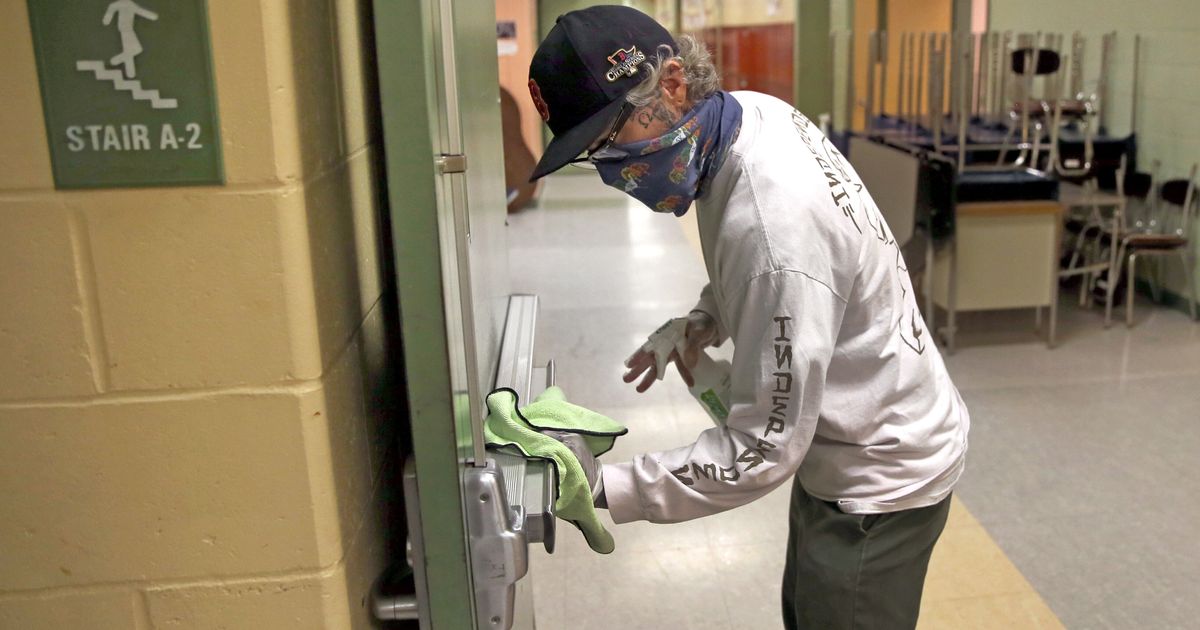Schools should try to reopen if they think they can do so safely, prioritizing students with disabilities and children in kindergarten through fifth grade, according to a report released Wednesday. However, schools likely won’t be able to take all the necessary precautions without an injection of resources from states and the federal government.
The new report from the National Academies of Sciences, Engineering, and Medicine, which compiles months of research from education and medical experts, offers one of the most comprehensive looks at the costs and benefits of U.S. schools reopening amid the coronavirus pandemic. Over its more than 80 pages, the report outlines the potentially dire health risks communities could face if schools are reopened hastily and asks school and community leaders to engage in constant risk assessment.
Although the report ultimately stresses the importance of providing students with in-person learning opportunities, it also details the tremendous challenges that schools could face, especially without a major influx of funds.
Implementing the necessary safety strategies could collectively cost schools an estimated $20 billion — even as shortfalls at the state and local levels mean many schools are currently tightening their budgets.
“In the absence of substantial financial support from the federal government and state governments, it is likely that the communities most impacted by COVID-19 will see even worse health outcomes in the wake of reopening schools,” says the report. “Schools will not be able to take on the entire financial burden of implementing the mitigation strategies.”
One of the greatest issues may be finding enough staff members, especially if classes have fewer students to accommodate social distancing. Many teachers are high-risk or over the age of 60.
The nuance of the detailed report, which comes from an organization whose mission is to provide independent scientific guidance on urgent policy matters, contrasts the White House’s messaging on this issue. President Donald Trump and Secretary of Education Betsy DeVos have called on schools to fully reopen, chiding districts that take other approaches. They have gone so far as to threaten to cut federal funding for schools that don’t reopen in the fall, even though Congress authorizes federal education funding.
Schools may have to pick and choose which safety precautions they’re able to afford, with little guidance over which ones they should prioritize.
The researchers say schools should take several steps to prepare for reopening, including hiring more nurses and ensuring that buildings are cleaned regularly, that classrooms are properly ventilated and that there are plenty of disposable masks on hand for students and staff. Schools may consider implementing contact tracing programs, too, but they would require an injection of local resources.
And schools serving lower-income children ― the schools where children may be in most urgent need of learning opportunities ― are perhaps the least equipped to make these changes. They may not have enough custodial staff, and might have older buildings. Over 40% of districts need to update the heating, ventilation and air condition in their schools, according to a report the Government Accountability Office released last month.
“Unless school districts directly address equity in their planning process, reopening schools during the COVID-19 pandemic will undoubtedly exacerbate existing disparities in educational access and outcomes,” the NASEM report says. “As part of the planning process, districts will need to understand how existing inequities (in school facilities, staffing, access to resources, etc.) are likely to interact with the lived realities of communities disproportionately affected by COVID-19.”
Schools may have to pick and choose which safety precautions they’re able to afford, with little guidance over which ones they should prioritize. Even with a comprehensive set of mitigation strategies, it will be impossible to eliminate the risk of COVID-19 at schools, and the report says districts should plan for the possibility of staff or students contracting the coronavirus. Other countries have successfully reopened schools, but they have done so after transmission rates reached low points ― in the U.S., COVID-19 continues to ravage many communities.
Many states have issued guidance for schools to help them decide whether to reopen, but they’ve put district leaders under a tremendous amount of pressure by saying they can make the final call. School superintendents are struggling to make such a consequential decision for the children, parents and staff they serve — especially since the decision-making process for reopening schools should involve working with local public health officials and regularly reevaluating the needs of the community.
Florida and Texas, where coronavirus cases are surging, have called on schools to open five days a week. Some major districts, such as the Los Angeles Unified School District, have announced that they will only provide online learning options at the beginning of the school year. New York City has announced it will provide a hybrid of in-person and distance learning.
“As we think about the needs of our family and students, especially those facing poverty, we have legitimate concerns from our employees,” Nikolai Vitti, the superintendent of Detroit Public Schools, told HuffPost. “I’m struggling to balance what I know are the academic social emotional needs of children and the legitimate health concerns of employees.”
If schools decide to reopen, the researchers say they should prioritize in-person education for students with disabilities and elementary school children, groups that may have suffered the greatest during remote learning.
The nation’s largest teachers union, the National Education Association, responded to the new report by saying buildings should indeed reopen, but only if the safety of staff and students is ensured.
“The bottom line is that without a comprehensive plan that includes federal resources to provide for the safety of our students and educators with funding for personal protective equipment, socially distanced instruction, and addressing racial inequity, we could be putting students, their families, and educators in danger,” NEA President Lily Eskelsen García said in a statement.











